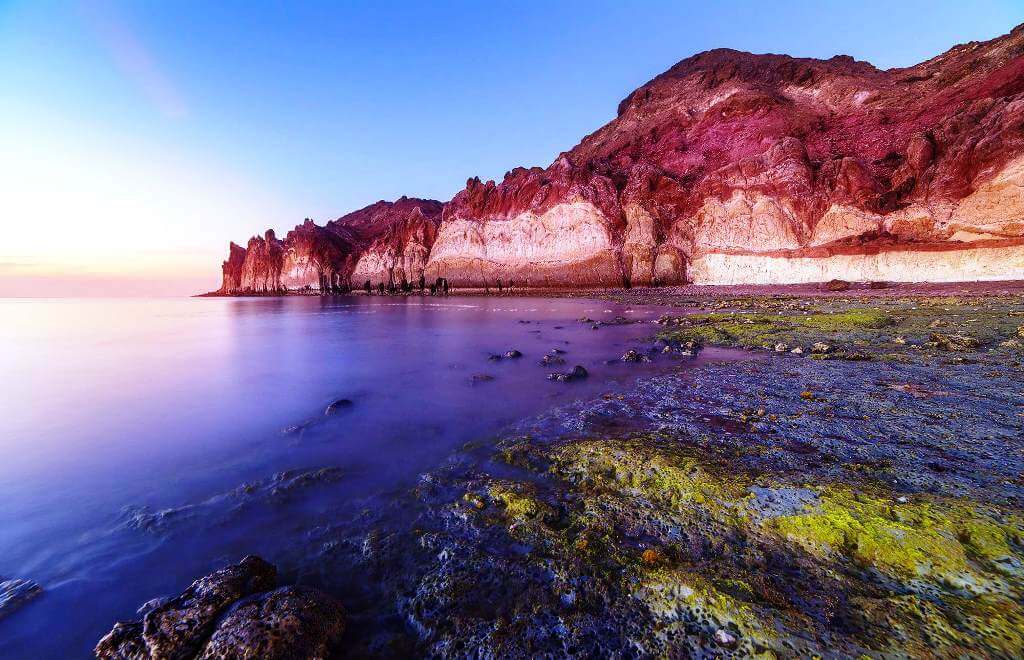Iran weather
Iran Is The Land of Four Seasons!
Iran, with an area of 1,648,195 km², is the 17th largest country in the world. So, when we talk about Iran weather, we are describing a country with diverse climates. You can experience different temperatures in each region of this vast country. There is climatological diversity with three types of climate.
- Dry and semi-dry climate
- Moderate mountainous climate
- Caspianic climate
In the northwest and west of Iran, winter is cold with heavy snowfalls. Spring and fall are mild, while summer is dry and hot. However, in the south parts, winter is mild but the summer is hot. You can experience dry weather in the deserts and humid climate near the Caspian Sea in the north.
Best Time to Visit Iran
As Iran is a vast country, you can travel to this land whenever you like and choose a region that has nice weather at your trip time. But when it comes to choosing the best time to visit Iran, we usually focus on the most popular cities located on the Classic Route of Iran, including Tehran, Shiraz, Isfahan, Yazd, Kerman, and Kashan. Notably, the high season in these destinations is in spring and fall. While, the hottest and driest months in these cities are June, July, and August.
The Months of each Season in Iran
Time to Visit Iran Destination Month by Month
High Season in Iran
Start of High Season in Iran: Early March
End of High Season in Iran: End of May
The best time of year to travel to Iran is in the high season. During the high season in Iran, you can experience nice temperatures in most regions. Iran’s weather becomes mild, the sky is clean, and sometimes a short rain makes the weather more gorgeous. On the other hand, Iran tour services’ prices are the highest, and most of the hotels are almost fully booked. So if you want to plan for your Iran tour during this time, you have to book your hotels and other services sooner. Besides, during the Nowruz celebration, starting from March 21st till April 2nd, you will experience even higher prices and more crowded cities.
To know how much it costs to travel to Iran, please check out our Iran Travel Cost blog.
Shoulder or middle Season in Iran
Start of Middle Season in Iran: Early June
End of Middle Season in Iran: Middle October
As the most duration of the shoulder season is during summer, and Iran weather becomes dry and very warm in most parts of Iran, there are fewer travelers. The services’ prices are lower, and most of the hotels are available.
However, it is suggested not to choose southern cities and islands during the summer because it would be unbearably hot in summer. On the other hand, the best time to visit Iran’s western and northwestern regions is during summer. Consequently, the best option for shoulder season in Iran is traveling to northwest regions, like Tabriz, Ardebil, Kordestan, Uramanat, Kermanshah, Hamedan, Shahrekord, and Yasuj.
However, when fall starts, the weather becomes mild, and you can experience gorgeous weather while the services’ rates are more reasonable. Also, the hotels are less crowded in comparison with the high season. The weather during September and October is good for eco-tourism. Hence, some tourists believe that the best time to visit Iran is during the fall.
Low Season in Iran
Start of Low Season in Iran: Middle of October
End of Low Season in Iran: Late February
Iran weather during winter is bitterly cold and dry. And it is not suggested to choose destinations like deserts or mountains (in the west and northwest). But if you like to go skiing, Iran ski resorts are amazing during winter. However, we advise that you go to mountainous areas with experience guides to avoid the dangerous frozen spots.
You can also travel to southern parts of Iran, such as the Kish and Qeshm islands, which have mild weather during winters.
Obviously, during the low season in Iran, the hotels have good offers, and most of the rooms are available.
Iran Destinations Weather
You can find the weather of Iran’s popular destinations, the best time to visit these cities, seasonal climate, temperature, rain, sunset and sunrise times & … in the below links.







